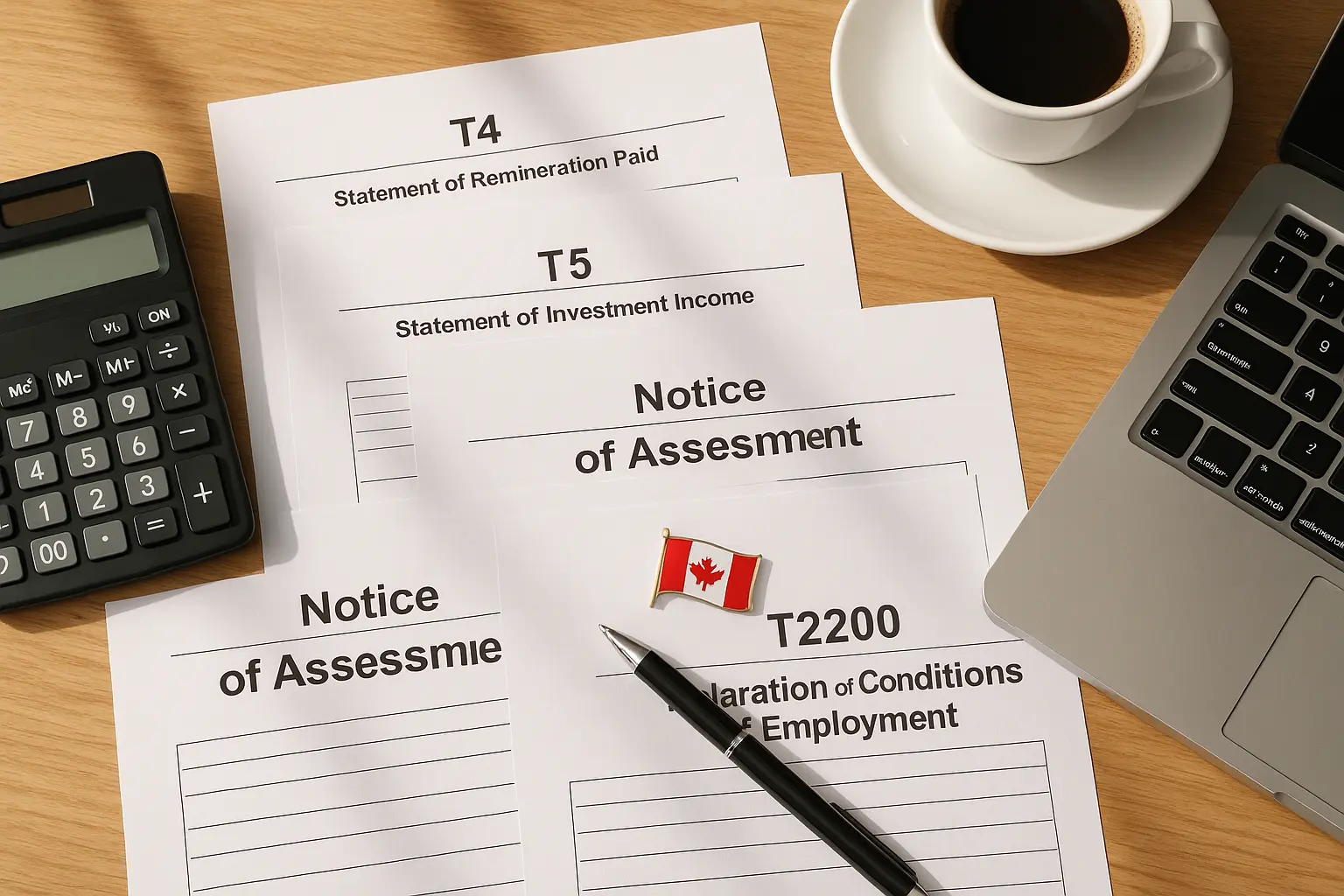What Is Nonprofit Accounting? Canada Financial Guide

Nonprofit accounting is the process of managing and reporting the financial activities of organizations that aim to benefit society rather than generate profit. Since nonprofits often rely on donations and grants to fund their activities, their accounting practices are tailored to ensure accountability and transparency, setting them apart from for-profit businesses.
Nonprofit accounting focuses on transparency, accountability, and ensuring that donated funds are used as intended by donors and regulatory requirements.
This guide explores the key principles that shape nonprofit financial management in Canada, from basic accounting standards to complex fund restrictions.
Whether you are starting a new nonprofit, serving on a board, or want to understand how these organizations manage their finances, this guide covers the essential elements that make nonprofit accounting unique and vital for success.
Defining Nonprofit Accounting in Canada
Nonprofit accounting in Canada follows standards that prioritize accountability and transparency over profit.
Canadian not-for-profit organizations use unique reporting practices to track restricted funds and demonstrate stewardship to donors and stakeholders.
Purpose and Unique Features
Nonprofit accounting provides a framework for organizations operating for public benefit instead of profit.
This approach focuses on accountability, transparency, and fulfilling missions.
The main purpose is responsible resource management.
Organizations must show how they use donations, grants, and other funding sources effectively.
Key unique features include:
- Fund accounting to track restricted and unrestricted resources separately
- Accrual basis accounting required under ASNPO standards
- Expense allocation across program services, supporting services, and fundraising activities
- Revenue recognition based on donor restrictions and grant requirements
Canadian not-for-profit organizations prepare four essential financial statements: statement of financial position, statement of operations, statement of changes in net assets, and statement of cash flows.
Fund accounting stands out as the most distinctive feature.
This method separates resources by purpose, ensuring compliance with donor restrictions and legal requirements.
Nonprofit Organizations vs For-Profit Accounting
The main difference lies in purpose and focus.
For-profit accounting aims for profitability and shareholder returns, while nonprofit accounting emphasizes mission fulfillment and stewardship.
Revenue recognition differs significantly:
Nonprofit organizations use net assets instead of equity accounts.
We classify these as unrestricted, restricted, or endowment funds based on donor limitations.
Expense reporting focuses on functional categories.
We allocate costs between program services, management, and fundraising to show resource utilization transparency.
Tax treatment also varies.
Registered charities receive tax exemptions but face strict compliance requirements that for-profit entities do not encounter.
Types of Not-for-Profit Entities
Canada recognizes several types of not-for-profit entities, each with specific accounting and regulatory requirements.
Registered charities represent the largest category.
These organizations qualify for tax exemptions and can issue donation receipts to contributors.
Non-profit organizations without charitable status include clubs, associations, and societies.
They may be tax-exempt but cannot issue charitable receipts.
Religious organizations often qualify as charities but may have additional reporting exemptions.
Professional associations and trade organizations serve specific member groups.
These entities focus on member services rather than public benefit.
Foundations primarily distribute grants to other charitable organizations.
They face unique requirements for disbursement quotas and investment management.
Each entity type follows ASNPO standards but may have additional sector-specific requirements.
Registered charities must file annual returns with the Canada Revenue Agency, while other nonprofits face different provincial reporting obligations.
How Nonprofit Accounting Differs from For-Profit Accounting
For-profit businesses focus on generating income for owners or shareholders, while nonprofits prioritize fulfilling their mission. This fundamental difference shapes the way nonprofits handle their finances. Instead of measuring success through profits, nonprofits must ensure that funds are used responsibly and in line with donor or grant restrictions.
Let’s dive into some of the key differences in their accounting practices:
1. Equity vs. Net Assets
In for-profit businesses, the difference between what’s owned (assets) and what’s owed (liabilities) is called equity, representing the ownership stake of shareholders. Nonprofits, however, don’t have owners. Instead, this difference is referred to as net assets.
Net assets in nonprofits are classified based on donor restrictions:
- Restricted Net Assets: Funds that must be used for a specific purpose, such as a donation earmarked for building a new community center.
- Unrestricted Net Assets: Funds the organization can use freely to support its mission.
This classification ensures that nonprofits honor the intentions of their donors.
2. Net Income vs. Change in Net Assets
For businesses, the difference between revenue and expenses is called net income, which reflects profitability. In nonprofits, this difference is referred to as the change in net assets. It’s less about profits and more about how resources have been allocated to further the organization’s goals.
3. Report Titles and Terminology
While nonprofits and businesses prepare similar financial reports, the language used differs slightly:
- The balance sheet in for-profits is called the Statement of Financial Position in nonprofits.
- The income statement becomes the Statement of Activities in nonprofits.
These changes reflect the focus on mission and transparency rather than profit generation.
4. Contributions and Revenue Recognition
Handling contributions is one of the most unique aspects of nonprofit accounting. Donations can come with specific terms or conditions, such as:
- Timing Restrictions: A pledge might only be recognized as revenue once certain conditions are met, like securing matching funds.
- Purpose Restrictions: Donations may only be used for designated programs or projects, such as scholarships or research grants.
This means nonprofits must carefully track and report contributions to ensure they align with the expectations of donors and grant funders.
5. Expense Reporting
Nonprofits are required to report expenses in two ways:
- By Nature: Categorizing expenses based on what they are (e.g., salaries, rent, supplies).
- By Function: Breaking expenses into program services, management, and fundraising activities.
Many nonprofits create a Statement of Functional Expenses to meet these requirements, showing how resources are allocated across their activities.
Why Does Nonprofit Accounting Matter?
Nonprofit accounting is about more than just crunching numbers—it’s about building trust. Donors, grant funders, and other stakeholders want to know if their contributions are making an impact. By maintaining transparent and accurate financial records, nonprofits can demonstrate their commitment to their mission and foster long-term support.
In summary, while nonprofit and for-profit accounting share some basic principles, their goals and approaches are fundamentally different. Nonprofits prioritize accountability over profitability, ensuring that every dollar is used to create a positive impact.
Have questions about nonprofit accounting or need help with your organization’s finances? Let’s talk!
Core Principles: Accountability, Transparency, and Compliance
Canadian nonprofit organizations follow three key principles that guide their financial practices.
These principles help build trust with donors and ensure organizations meet legal requirements set by the Canada Revenue Agency.
Stakeholder Expectations
Donors and funders expect nonprofits to use their money wisely and for the right purposes.
When people give money to a nonprofit, they want to know how it gets spent.
Key stakeholder groups include:
- Individual donors
- Government funders
- Grant providers
- Board members
- Community members
We must track restricted funds separately from unrestricted funds.
This means keeping donations with specific purposes in different accounts.
For example, money given for a building project cannot be used for office supplies.
Stakeholders want regular reports that show where their money went.
They expect clear financial statements that are easy to understand.
Many donors will stop giving if they cannot see how their contributions made a difference.
Board members have a duty to watch over the organization's money.
They need accurate financial information to make good decisions.
Grant funders often require detailed reports before giving more money.
Ethical Considerations and Best Practices
Nonprofit organizations must follow strict ethical rules when handling money.
We have a duty to use resources in ways that match our mission and values.
Essential ethical practices include:
- Keeping accurate financial records
- Separating personal and organizational expenses
- Following donor restrictions exactly as given
- Reporting honestly about programs and results
We must avoid conflicts of interest when spending money.
This means not using nonprofit funds for personal benefit.
All expenses should serve the organization's charitable purposes.
Fund accounting helps us maintain ethical standards.
By tracking restricted and unrestricted funds separately, we ensure money gets used as intended.
This system prevents accidental misuse of donations.
Staff and board members should receive training on proper financial procedures.
Clear policies help prevent mistakes and misconduct.
Regular internal reviews can catch problems before they become serious.
Consequences of Non-Compliance
The Canada Revenue Agency can take serious action against nonprofits that break the rules.
Organizations that fail to follow proper accounting standards risk losing their tax-exempt status.
Potential consequences include:
- Loss of charitable registration
- Financial penalties
- Public disclosure of violations
- Damaged reputation with donors
Lost registration means the organization cannot issue tax receipts to donors.
This makes fundraising much harder since donors lose their tax benefits.
The CRA publishes information about organizations that lose their status.
We must file required forms like the T3010 for charities or T1044 for nonprofits on time.
Late or missing filings can trigger reviews and penalties.
Serious violations may result in complete shutdown of operations.
Poor financial management can also lead to donor lawsuits.
If restricted funds are misused, donors may take legal action to recover their money.
This creates costly legal problems that drain resources from programs.
Key Accounting Standards and Regulatory Framework
Canadian nonprofit organizations follow specific accounting standards for their unique financial structure.
They must also comply with federal and provincial regulations that govern their tax-exempt status and operations.
Accounting Standards for Not-for-Profit Organizations (ASNPO)
ASNPO forms part of Canadian Generally Accepted Accounting Principles (GAAP) and provides the main framework for nonprofit financial reporting.
These standards require organizations to use accrual-based accounting instead of cash-based methods.
Core ASNPO Requirements:
- Revenue Recognition: We recognize contributions when received or receivable if amounts can be reasonably estimated
- Fund Accounting: Organizations must separate restricted and unrestricted funds according to donor intentions
- Expense Allocation: Costs must be allocated between program services, supporting services, and fundraising activities
The standards require four essential financial statements: statement of financial position, statement of operations, statement of changes in net assets, and statement of cash flows.
ASNPO ensures transparency by requiring detailed disclosure of how organizations use donor funds.
This builds trust with stakeholders and shows proper stewardship of resources.
Canada Revenue Agency and Tax-Exempt Status
The Canada Revenue Agency (CRA) oversees registered charities and qualified donees through specific compliance requirements.
Organizations must maintain charitable status by following strict operational and reporting guidelines.
CRA Compliance Requirements:
- File annual T3010 returns within six months of fiscal year-end
- Spend minimum 3.5% of average property value on charitable activities
- Maintain detailed records of all financial transactions
We must ensure our financial statements align with CRA expectations for program spending ratios.
The agency expects organizations to show that funds mainly support charitable purposes, not administrative costs.
Loss of charitable status results in immediate tax implications and loss of ability to issue donation receipts.
Regular monitoring of compliance helps prevent these serious consequences.
Provincial and Federal Requirements
Nonprofit organizations face oversight from both provincial and federal authorities.
Provincial requirements vary across Canada.
Federal Requirements:
- Income tax exemption applications through CRA
- GST/HST registration and compliance where applicable
- Employment standards and payroll obligations
Provincial Variations:
- Incorporation and annual filing requirements differ by province
- Some provinces require audited financial statements based on revenue thresholds
- Director and governance requirements vary
We must manage complex reporting timelines that often do not match between jurisdictions.
Organizations operating in multiple provinces face extra compliance layers that require careful coordination.
Professional accounting support becomes essential with these overlapping requirements.
Many organizations benefit from creating compliance calendars to track deadlines throughout the year.
Essential Financial Statements for Nonprofits
Canadian nonprofits must prepare four main financial statements to show their financial health and meet legal requirements.
These statements track assets, cash flows, and changes in net assets over time.
Statement of Financial Position
The Statement of Financial Position shows what a nonprofit owns and owes at a specific date.
This statement works like a balance sheet for businesses.
Assets appear on one side, including cash, equipment, and money owed to the organization.
We list current assets first, then long-term items like buildings.
Liabilities show what the organization owes, such as bills, loans, and other debts.
Short-term debts come before long-term ones.
Net Assets replace owner's equity from business statements.
These show the organization's worth after subtracting debts from assets.
We split net assets into categories:
- Without donor restrictions - funds we can use for any purpose
- With donor restrictions - money limited to specific uses
This statement helps donors and board members see if the nonprofit can pay its bills and continue operations.
Statement of Operations
The Statement of Operations tracks all money coming in and going out during a specific period.
This shows if the nonprofit spent more or less than it received.
Revenue includes donations, grants, program fees, and investment income.
We group these by type and note any restrictions donors placed on funds.
Expenses cover program costs, administration, and fundraising.
Canadian rules require us to separate:
- Program expenses (direct mission work)
- Management costs (administration)
- Fundraising expenses
The bottom line shows the change in net assets.
A positive number means we received more than we spent.
A negative number shows we spent more than revenue.
This statement proves to donors that we use funds properly and helps track our financial progress.
Statement of Changes in Net Assets
This statement explains how net assets changed during the year.
It connects last year’s Statement of Financial Position to this year’s.
We show changes in two categories:
- Net assets without donor restrictions
- Net assets with donor restrictions
Common changes include:
- Revenue that increased net assets
- Expenses that decreased net assets
- Released restrictions when we used restricted funds
- New restrictions from donor gifts
For example, if donors gave $10,000 for a specific program, we show this as an increase in restricted net assets.
When we spend the money on that program, we move it to unrestricted.
This statement helps readers understand why our financial position changed.
It also shows how we managed restricted funds.
Statement of Cash Flows
The Statement of Cash Flows tracks actual cash moving in and out of the organization.
This statement only counts real cash transactions, unlike the Statement of Operations.
We organize cash flows into three sections:
Operating activities show cash from daily operations.
This includes donations received, program fees collected, and bills paid.
Investing activities track cash used to buy or sell investments and equipment.
For example, buying computers shows as cash going out.
Financing activities include loans received or repaid and major donor contributions for buildings or endowments.
The statement shows our net change in cash for the year.
This helps us see if we have enough cash to pay bills and fund programs, even if our operations statement shows a surplus.
Fund Accounting and Donor Restrictions
Fund accounting helps Canadian nonprofits track money based on donor restrictions.
We separate restricted donations from unrestricted funds and follow specific rules for grants and designated contributions.
Understanding Fund Accounting
Fund accounting is a specialized system that separates money into different categories based on restrictions.
Each fund works like its own account with balanced income and expenses.
We use this method to track funds with specific spending rules from donors, grants, or our board.
Each fund maintains separate records for assets, liabilities, and net assets.
Key benefits include:
- Clear tracking of restricted donations
- Better compliance with donor requirements
- Improved transparency in financial reporting
- Protection of designated funds
The system ensures we use money exactly as donors intended.
We do not mix restricted funds with general operating money.
Fund accounting differs from regular business accounting.
We focus on accountability rather than profit.
Each fund shows how we received and spent money for specific purposes.
Types of Funds and Restrictions
Canadian nonprofits typically manage three main fund types with different rules and purposes.
Unrestricted Funds have no donor-imposed limitations.
We can spend this money on any charitable purpose including operations, administration, and programs.
Temporarily Restricted Funds come with specific conditions from donors:
- Purpose restrictions (education programs only)
- Time restrictions (must spend by 2026)
- Geographic restrictions (local community only)
Permanently Restricted Funds preserve the original donation amount forever.
We invest the principal and use only investment income for charitable work.
Endowment funds are the most common permanently restricted type.
The donor's original gift stays intact while earnings support our mission over time.
We must document all restrictions clearly in our accounting system.
Grant agreements often create temporary restrictions with detailed spending requirements and reporting deadlines.
Tracking Donations and Grants
We track each donation and grant based on its specific restrictions and requirements.
Proper documentation starts when we receive the contribution.
For individual donations, we record:
- Donor name and contact information
- Amount and date received
- Any restrictions specified by donor
- Tax receipt number issued
For grants, we maintain detailed records including:
- Grant agreement terms and conditions
- Reporting requirements and deadlines
- Eligible and ineligible expenses
- Matching fund requirements
We use separate accounting codes for each restricted fund.
This helps us generate reports showing exactly how we spent restricted money.
Monthly reconciliation ensures our records match bank statements and grant agreements.
We prepare fund-specific reports for donors and grantors showing their contributions and related expenses.
Electronic systems work best for tracking multiple restrictions.
We can generate reports quickly and avoid mixing different types of funds accidentally.
Financial Management, Planning, and Budgeting
Financial management in Canadian nonprofits requires strategic planning to maximize limited resources.
We must maintain transparency and accountability.
Effective budgeting helps us track restricted and unrestricted funds.
Proper resource allocation ensures our mission-driven work continues sustainably.
Budget Development and Monitoring
We create comprehensive budgets that align with our organizational mission and donor requirements.
Our budget serves as a financial roadmap outlining expected revenues and expenses for the fiscal year.
Budget development starts with reviewing historical financial data.
We examine past revenue sources, including donations, grants, and program fees.
This helps us set realistic income targets.
We separate restricted and unrestricted funds in our budget.
Restricted funds have donor-imposed limitations for specific programs or purposes.
Unrestricted funds give us flexibility for operational costs and unexpected expenses.
Key budget components include:
- Program expenses (direct mission work)
- Administrative costs (overhead expenses)
- Fundraising expenses
- Capital expenditures
We monitor our budget monthly by comparing actual results to planned amounts.
This helps us identify variances early and make necessary adjustments.
Regular budget reviews with our board ensure transparency.
We present clear reports showing how we use funds according to donor intentions and organizational priorities.
Resource Allocation Strategies
We allocate our limited resources strategically to maximize our impact.
This means balancing program funding with essential operational needs.
Our allocation decisions reflect our mission priorities.
We direct the largest portion of funds toward programs that directly serve our beneficiaries.
We maintain appropriate overhead costs for organizational sustainability.
While donors often scrutinize administrative expenses, these costs are essential for growth and effectiveness.
Effective allocation strategies include:
- 70-80% for program services
- 15-20% for administration
- 5-10% for fundraising activities
We track how restricted funds are spent separately from unrestricted funds.
This ensures we comply with donor requirements and maintain trust.
Cash flow management is crucial for resource allocation.
We must time our expenditures to match revenue patterns, especially for seasonal organizations.
Grant funding often requires specific allocation percentages.
We need to understand these requirements before accepting funding to ensure compliance.
Addressing Financial Challenges
We face unique challenges that require proactive financial management strategies.
Revenue uncertainty is common as we depend on donations and grants that can fluctuate.
Building reserve funds helps us weather financial difficulties.
We should aim to maintain 3-6 months of operating expenses in unrestricted reserves.
Common challenges include:
- Seasonal revenue fluctuations
- Donor fatigue or economic downturns
- Grant funding delays or reductions
- Unexpected operational costs
We need contingency plans for funding shortfalls.
This might include reducing non-essential expenses or launching emergency fundraising campaigns.
Diversifying our revenue sources reduces financial risk.
We should not rely too heavily on any single donor or funding stream.
Regular financial monitoring helps us spot problems early.
We review cash flow projections monthly and adjust our plans accordingly.
Communication with stakeholders is vital during financial challenges.
We keep our board, staff, and major donors informed about our financial situation and recovery plans.
Demonstrating Impact: Accountability to Stakeholders
Nonprofit organizations must show how they use funds and measure their success to maintain trust with donors, grantmakers, and the public.
Clear reporting on program outcomes and transparent communication build credibility and ensure continued support for the organization's mission.
Reporting to Donors and Grantmakers
We provide clear and detailed reports to show how donations and grants create real impact.
Donors want to see their money makes a difference, while grantmakers require specific reporting to meet their funding requirements.
Regular donor communications should include:
- Financial statements showing fund allocation
- Program updates with measurable results
- Stories that highlight beneficiaries and outcomes
- Impact metrics tied to donation amounts
Grant reporting requires more formal documentation.
We track restricted funds separately and show exactly how we spent grant money.
Many grantmakers need quarterly or annual reports with specific data points.
Key reporting elements include:
- Budget versus actual spending comparisons
- Program milestone achievements
- Participant numbers and demographics
- Long-term outcome measurements
We customize reports for different stakeholder groups.
Major donors might receive detailed financial breakdowns, while regular supporters prefer simplified summaries with compelling stories.
Measuring Program Outcomes
We track specific metrics to prove our programs work effectively.
Program outcomes go beyond counting participants or activities—they measure actual changes in people's lives or communities.
Outcome measurement involves:
- Setting clear goals before programs start
- Collecting baseline data to compare against
- Using surveys, interviews, and assessments
- Tracking both short-term and long-term changes
We choose metrics that directly relate to our mission.
A food bank might track hunger reduction rates, while an education nonprofit measures literacy improvements or graduation rates.
We collect data regularly, not just at program end.
This helps us adjust programs if they're not working well.
We can also identify which parts of our programs create the biggest impact.
Important measurement tools include:
- Pre and post program surveys
- Follow-up interviews with participants
- Community impact assessments
- Third-party evaluations for credibility
Maintaining Public Trust
We build public trust through transparent financial practices and open communication about our work.
Trust takes time to develop but can be lost quickly if stakeholders doubt our integrity.
Transparency practices include:
- Publishing annual reports online
- Making financial statements easily accessible
- Clearly explaining fund restrictions and uses
- Addressing concerns or complaints promptly
We remain honest about both successes and challenges.
If a program doesn't work as planned, we explain what happened and how we are fixing it.
This honesty actually builds more trust than hiding problems.
Public accountability measures:
- Board meeting minutes available to public
- Clear policies for handling complaints
- Regular community updates and presentations
- Participation in nonprofit rating organizations
We also maintain trust by following all legal requirements.
This includes filing T1044 or T3010 forms with the Canada Revenue Agency on time.
These filings show we follow proper accounting standards and use funds appropriately.
Conclusion
Nonprofit accounting in Canada requires careful attention to unique standards and regulations.
Organizations must track restricted and unrestricted funds separately while maintaining complete transparency for donors and stakeholders.
At B&H Charity Accounting Firm, we understand the complexities of Canadian nonprofit accounting.
Our team helps organizations navigate ASPE standards, fund accounting requirements, and CRA filing obligations like T1044 and T3010 forms.
We ensure your financial records meet all regulatory requirements while supporting your mission-driven goals.
Ready to streamline your nonprofit accounting?
Contact us at (289) 301-8883 or visit charityaccountingfirm.ca to learn how we can support your organization.
Schedule your FREE consultation and discover how proper accounting practices can strengthen your nonprofit's financial foundation and donor relationships.
Frequently Asked Questions
Nonprofit accounting in Canada follows specific standards and practices that distinguish it from regular business accounting.
Organizations must comply with federal regulations while managing restricted and unrestricted funds using specialized accounting methods.
What does non-profit mean in Canada?
In Canada, a non-profit organization operates for society's benefit instead of generating profit for owners or shareholders.
These organizations focus on social, cultural, educational, or charitable purposes.
Non-profits can incorporate federally under the Canada Not-for-profit Corporations Act or provincially under similar laws.
They receive tax-exempt status from the Canada Revenue Agency when they meet certain criteria.
Any surplus funds must go back into the organization's mission.
No profits can go to members or directors as dividends.
What accounting system do nonprofits use?
Canadian nonprofits use fund accounting as their main accounting system.
This method separates finances into different "funds" based on donor restrictions or organizational needs.
Fund accounting tracks money donated for specific purposes and ensures it is used as intended.
This system increases transparency and builds donor trust.
Most nonprofits use accounting software designed for fund accounting.
These systems manage multiple fund categories and generate reports required by Canadian regulations.
What is the accounting method for nonprofit organizations?
Nonprofit organizations in Canada usually use the accrual accounting method.
We record transactions when they happen, not when cash changes hands.
The accrual method gives a clearer picture of the organization's financial position.
It shows all commitments and obligations, even if payment hasn't occurred yet.
Some small nonprofits may use cash accounting.
However, most funders and the CRA prefer accrual-based financial statements for better transparency.
What is the basic accounting for a non-profit organization?
Basic nonprofit accounting tracks revenues and expenses while separating restricted and unrestricted funds.
We monitor how donations are used according to donor instructions.
We record all income sources like donations and grants.
We also track expenses by program and administrative categories to show how funds support the mission.
Regular bookkeeping means keeping detailed records of all transactions.
We reconcile bank accounts and fund balances each month to ensure our records are accurate.
What is the formula for nonprofit accounting?
The basic accounting equation for nonprofits is: Assets = Liabilities + Net Assets.
Net assets replace "equity" used in for-profit businesses.
Net assets include unrestricted, temporarily restricted, and permanently restricted categories.
This breakdown shows which funds have donor-imposed limits.
We also calculate ratios like program expense ratio and fundraising efficiency ratio.
These formulas help us measure how effectively we use donated funds for our mission.
What are the four basic financial statements for a nonprofit?
The four essential financial statements are the Statement of Financial Position, Statement of Operations, Statement of Changes in Net Assets, and Statement of Cash Flows.
The Statement of Financial Position lists assets, liabilities, and net assets at a specific date.
This statement uses nonprofit terminology and is similar to a balance sheet.
The Statement of Operations shows revenues and expenses over a period.
The Statement of Changes in Net Assets explains how restricted and unrestricted funds changed during the year.
The Statement of Cash Flows reports money movement through operating, investing, and financing activities.
These statements give stakeholders a complete financial picture.






























